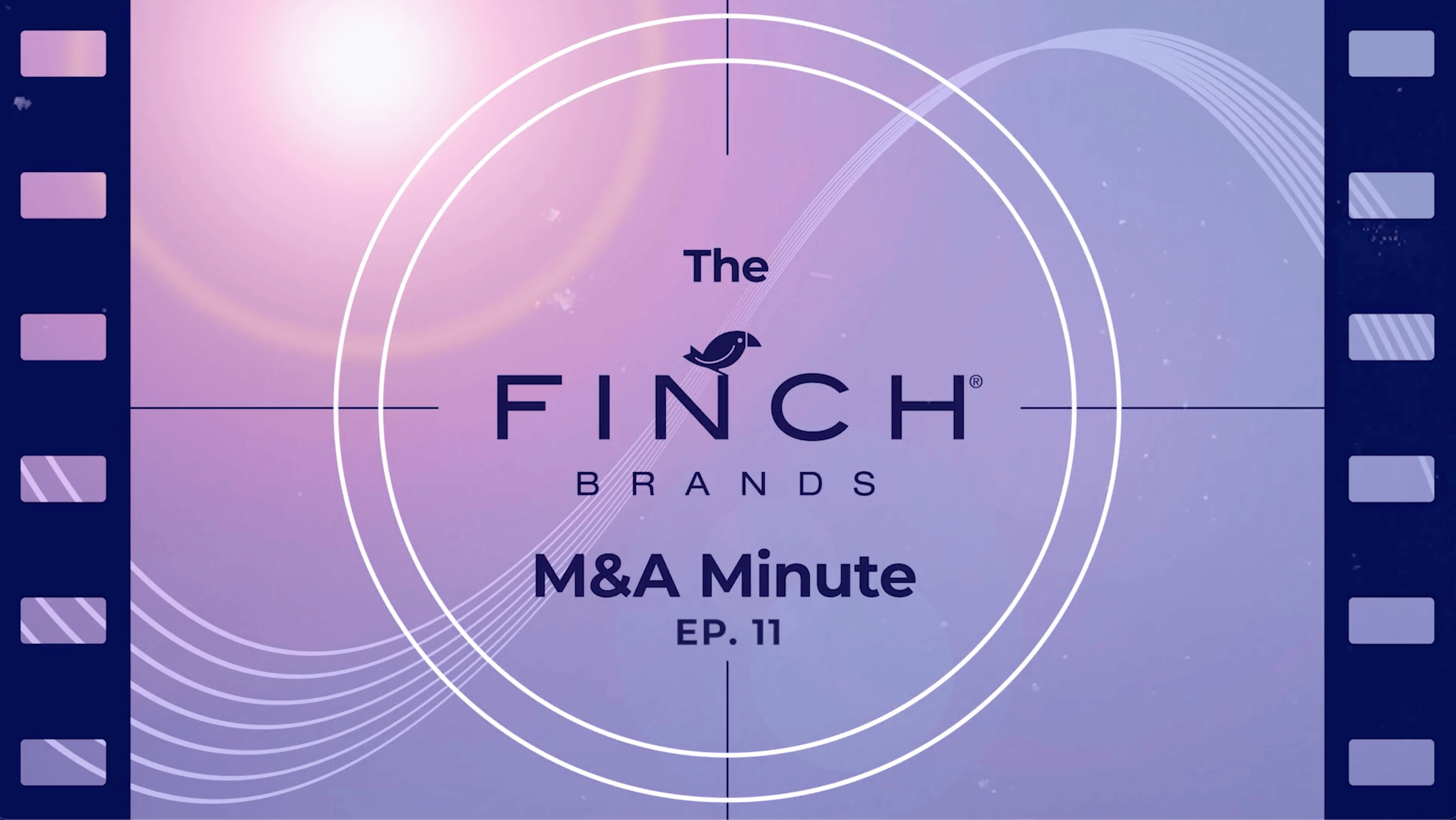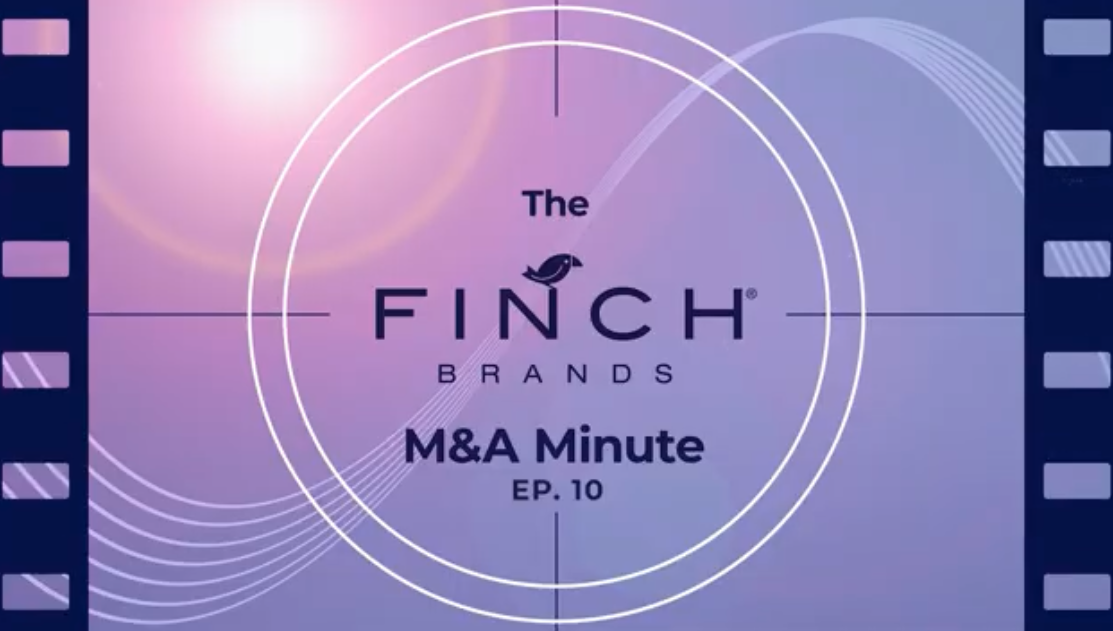The Name Game: Seven Truths About M&A Brand Naming

Everyone has an opinion on what makes a great name. That’s what makes naming a company so difficult. Anyone who can write or speak or admires a brand name like Amazon, Netflix, or NIKE feels qualified to come up with a winning name. Truth is, the name you select for a new brand post-M&A shouldn’t be left up to chance, groupthink, or the popular vote.
Naming isn’t easy. In fact, it can be pretty daunting in an M&A situation, given high-stakes emotions, often conflicting agendas, legal considerations, and other risks involved. By pulling the trigger on a merger or acquisition, you’re inviting a million questions about the new organization not the least of which is “what do we call the new enterprise?”
But let’s say you’ve considered the other possible brand naming approaches – elevating one name, fusing the names of parties in the deal, etc. Having successfully named dozens of new companies over the years, Finch Brands has compiled a set of “watch-outs” based on real-world truths that can help you navigate the process more effectively.
Here are seven truths that will help you navigate the M&A brand naming process – or most naming processes for that matter:
1. People don’t fall in love with names. They fall in love with brands
Many of the world’s best-known and best-loved brands chose names that communicate a story in an abstract way, and then built vibrant businesses around them. A name like Amazon probably came off as vague or obtuse at the start until the business went on to define itself and create experiences customers came to know and love.
A name is just a name until you make it stands for something. Try not to put too much pressure on your team to come up with lightning in a bottle or a name that does all the heavy lifting. It’s not realistic. Your name should say something, but it can’t say everything.
That’s why we counsel clients to evaluate names based on a rubric that considers potential, documents downside, and drives decision-making. Pixels on a screen will never have the same punch as the household names we know that belong to brands we admire.
2. Understand different brand names and their strengths/tradeoffs
There are a range of name types and they each have pros and cons. The ‘right’ answer is based on specific characteristics of the business, category, sales/marketing approach, and desired customer target.
Here are a few:
Neologisms are newly created words – like Verizon, Twitter, and Venmo. These are desirable because the usually offer a clearer path to legal availability and because their owners now have a clear path to making them mean what they want them to mean. The downside is that these names often don’t convey much to start and the brand education process can be costly.
Metaphors use existing words/concepts in a new way – think Amazon (the longest river in the word, conveys selection) and Google (an incredibly high number, conveys vastness). Metaphors have stopping power because people recognize the words, but aren’t quite sure how it applies to the company in question – a great storytelling opportunity. Yet like neologisms, the burden of communication is on the company.
Descriptive names like eTrade are often much harder to trademark – but they can accomplish more when it comes to clear positioning and setting a tone.
These name types – and others – are building blocks of a brand naming process. There is no single best approach. And it’s important to realize that naming doesn’t work like a vending machine where you put in your money and pull a lever to get what you want. If your approach is all art, each name could sound poetic and beautiful but might lack the substance to provide the foundation an organization needs.
If your approach is purely logical, names can come off as cold or sterile. To connect with employees and customers, we advise that you create names that connect emotionally, deliver commercially, and create a story that audiences want to be a part of. Try to find the sweet spot.
.jpg)
3. M&A naming isn’t a democracy
Naming a new enterprise often is a team sport – and that’s OK. Yet in any multi-stakeholder environment, it’s smart to limit the number of executives to as small a cohort as possible, with focused participation early in the process. This is particularly important in M&A situations when a new name will ultimately replace existing names to which many are understandably attached.
We also suggest that clients treat employees as a target audience to inspire thematic directions, but not as deciders or electors. This means avoiding things like voting polls or email surveys around name options. While this may feel like you’re being exclusionary, it can often make the process unwieldy and awkward, create unnecessary steps, and prematurely seed ideas that will wind up on the cutting room floor.
Lastly, we feel compelled to talk about online name-generator tools. Yes, these tools can generate names quickly, but the artificial intelligence algorithms name generators use are very basic. You’ll usually get a combination of words that have been mashed together from keywords and more often than not are confusing and lack meaning. A name may sound trendy, but it risks coming off as superficial and will likely fall short.
4. A name you love is probably taken. Now what?
This one is never easy. Say you fall in love with a brand name you came up with. Great! Hooray, we’re done. Hold on. It turns out the name is not available. Truth is, with most M&A deals being global, getting a name clear across trademark classes and geographies can be a challenge. This is why we integrate trademark screening into our process BEFORE name candidates ever see the light of day – but even our screening is neither a failsafe nor a substitute for the opinion of counsel.
So, let’s say word comes forth that the name everybody loves is off the table. In situations like these, we need to temper disappointment and get back to work. It is usually possible to uncover an adjacent name that checks similar boxes or springs from a similar idea. Our best practice suggests taking a minimum of 3 acceptable candidates into full legal evaluation.
With an estimated 200+ million companies in the world, naming isn’t always the fun and creative game everyone expects – in practice, it can feel like a slog. Landing on a winning name that can be the foundation of your company for years—or decades—requires a balance of inspiration, tenacity, objectivity, and a willingness to push beyond the ordinary. And also, a process that blends nimbleness and creativity with risk management.
5. Use time pressures to your advantage
There are a lot of moving parts in the process leading to deal closing and getting a name identified, cleared, designed, and launched in that time can be a herculean task. At Finch Brands, we have found that adhering to an objective process and working through a well-considered brand naming brief gives teams the ability to use time pressure in a way that works in their favor.
A small team moving quickly and objectively towards an end goal can minimize overthinking, second-guessing, or decisions by consensus. They can make quick, impactful decisions that lead to a powerful new-to-the-world name that everyone can buy into.
In this pursuit, it makes sense to set a deadline – real or arbitrary – and proceed as if all depends on it!
6. A brand name is a powerful asset but it’s not the only asset
While a brand name is a critical and extremely public asset, we made the point above that people fall in love with brands, not names. This is an exhortation to consider complementary assets – logo, brand styles, Purpose/Mission/Values – just as important as the name. Because a name cannot tell the whole story of a company, we need to knit these assets together, building off the tone the name sets, but compensating for what the name doesn’t/cannot convey.
This is especially important in M&A situations when there are multiple stakeholders coming together under a shared value proposition that is usually broader and more aspirational than their previous strategies or stories. While the name can certainly signal part of this new reality, it cannot tell the complete story on its own.
We guide clients to see their name in the context of other strategic levers, like the promise they make to their customers, their visual language, or the employee and customer experiences they aim to create. A name is just a name until you build something around it.
7. It pays to bring in M&A consultants
You shouldn’t have to handle the complexity of naming a new organization by yourself. It pays to work with a brand strategy consultancy that specializes in it. The best of these will have a lot of successful experience (which leads to strong naming ‘muscles’), a process that is simultaneously creative yet methodical, and a commitment to be there for the whole journey – listening and leading through all the twists and turns.
If you’re into the M&A process, it’s never too soon to start thinking about a name. The sooner you start working through the challenges and questions with someone who knows the landscape and has been there before, the better you’ll feel about the direction you’re headed and where you land. We know our way around the name game and would love to help you figure out the best approach.
Finch Brands is a real-world brand consultancy. We help companies at key moments clarify, strengthen, and activate the full potential of their brands and businesses.
Practical – yet provocative – we are champions of purposeful change both inside client businesses and in how they go into the market. With insight at the center and impact always in mind, we serve clients across categories and all along the growth track.






